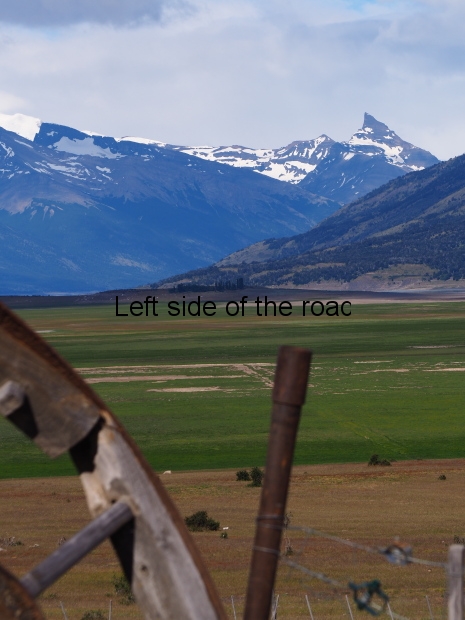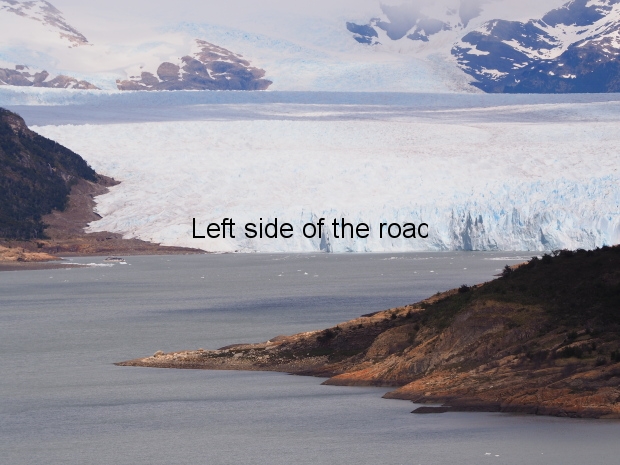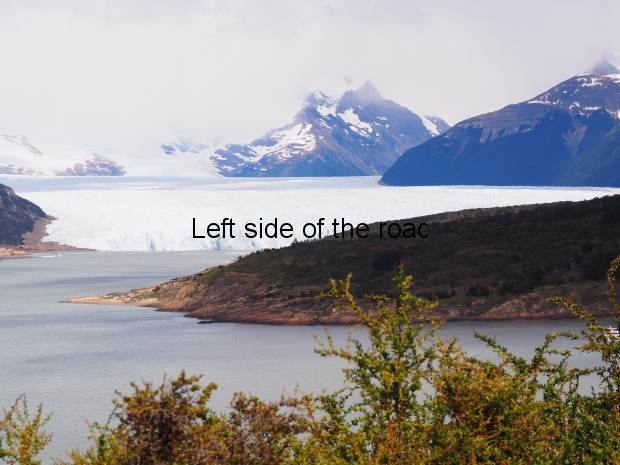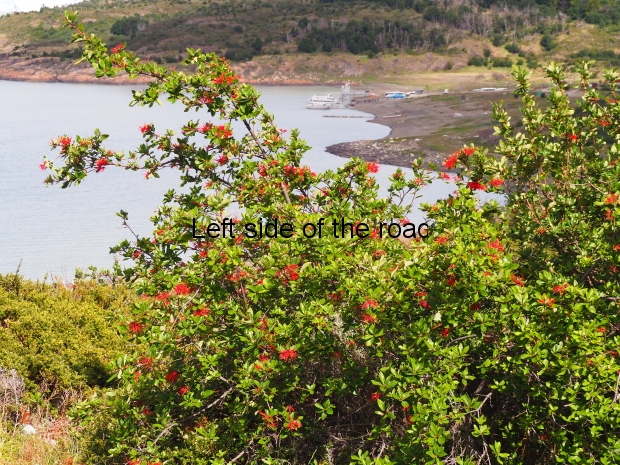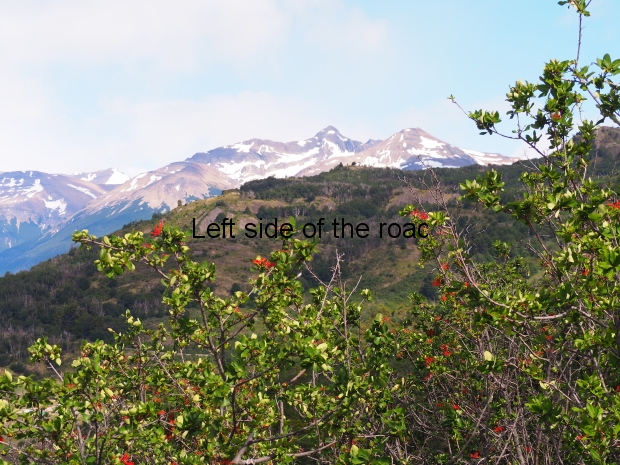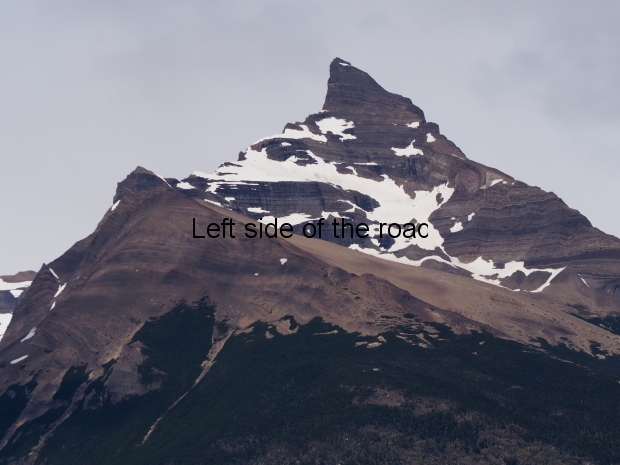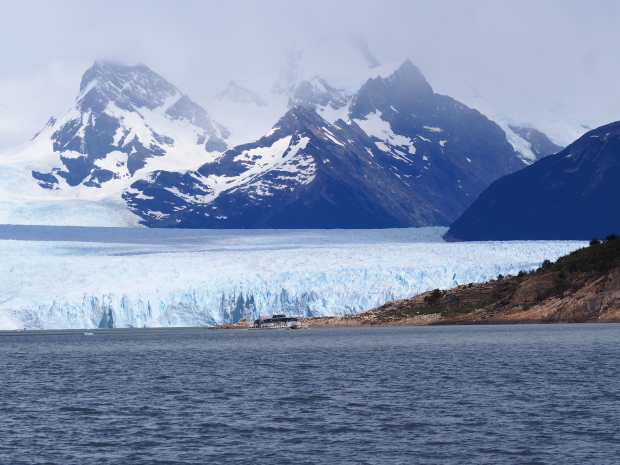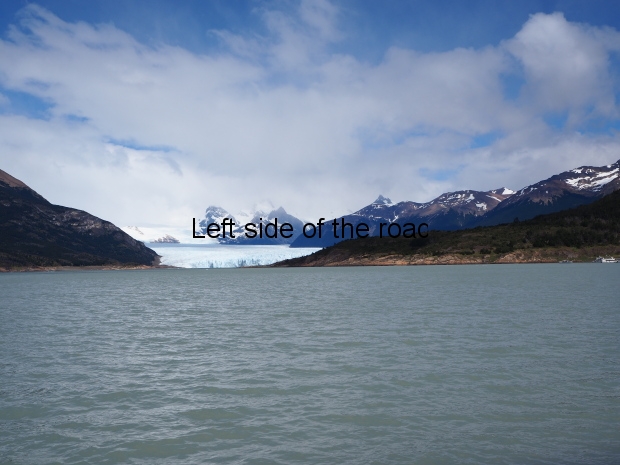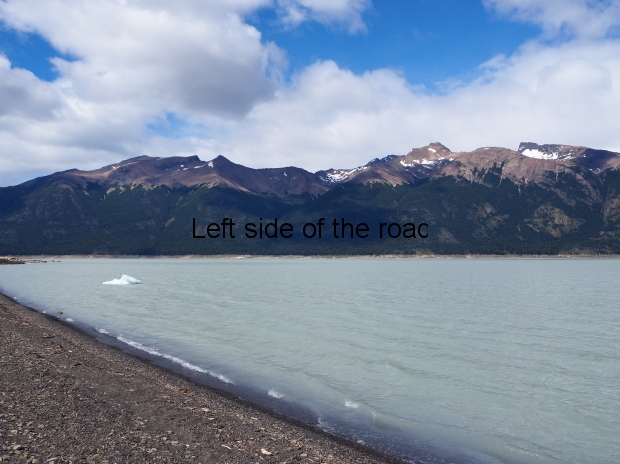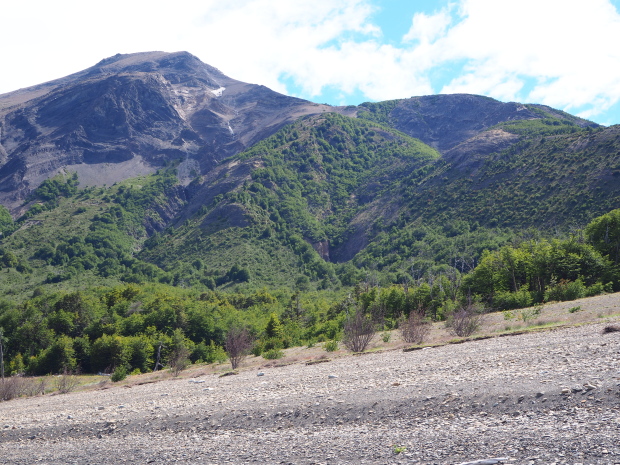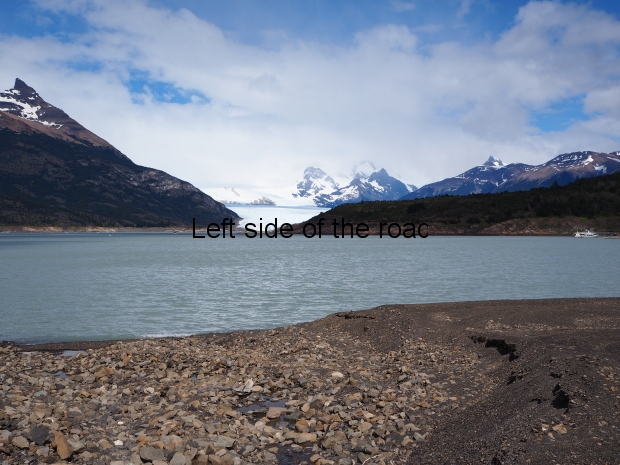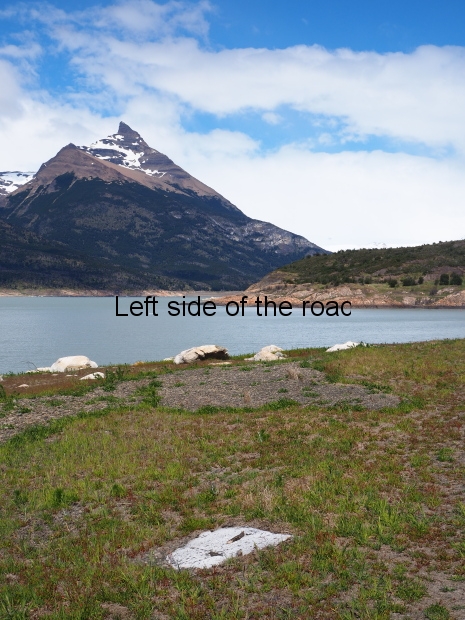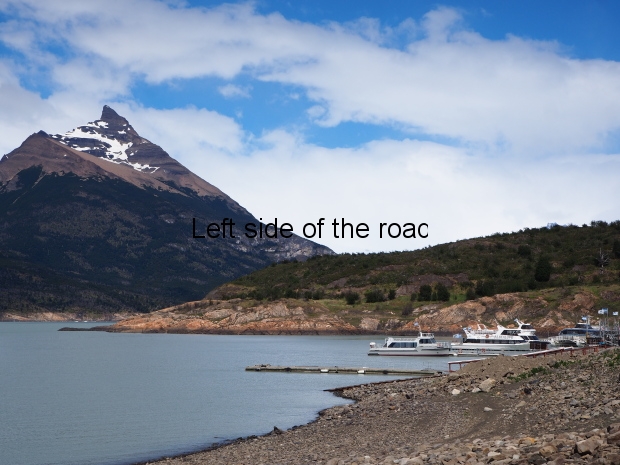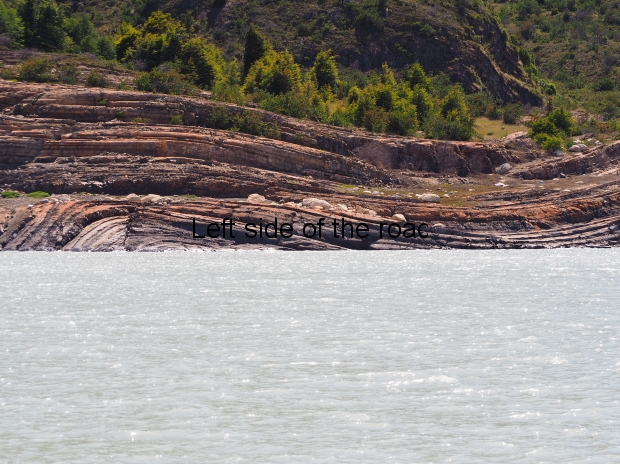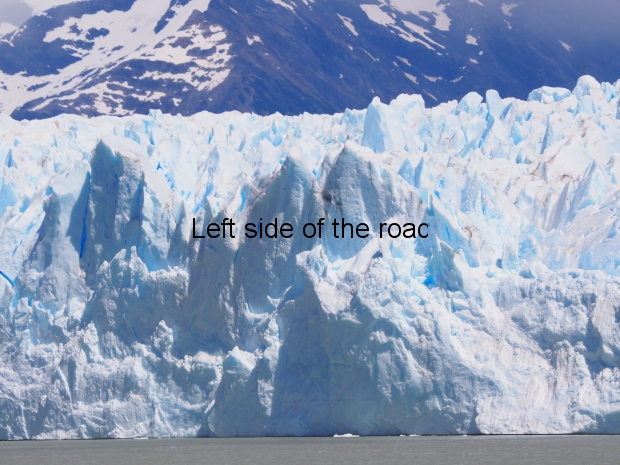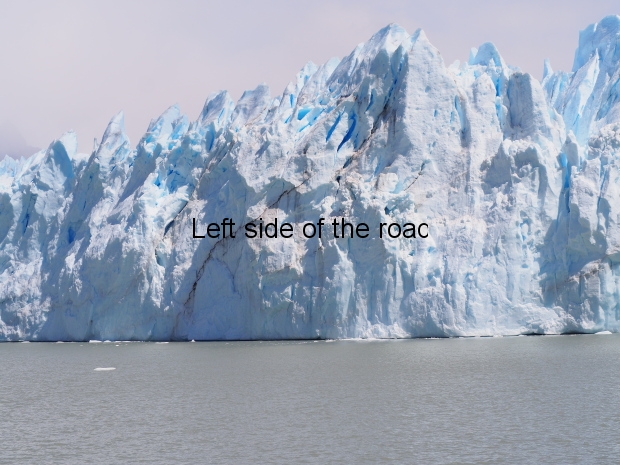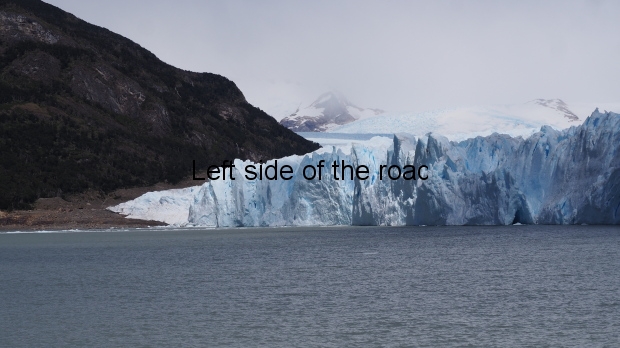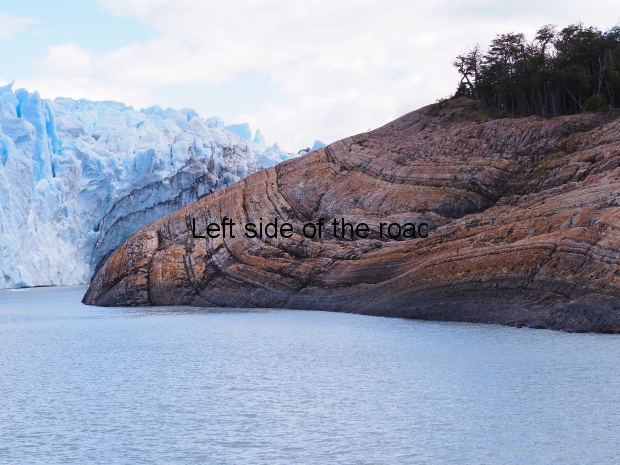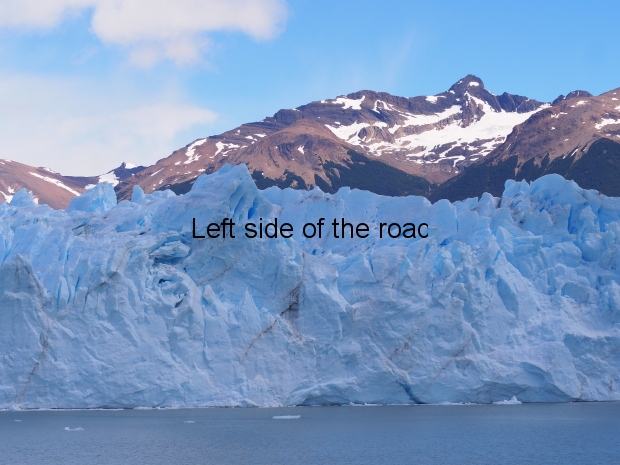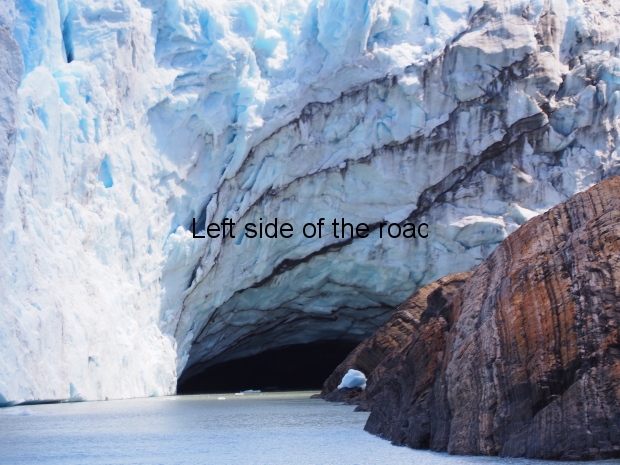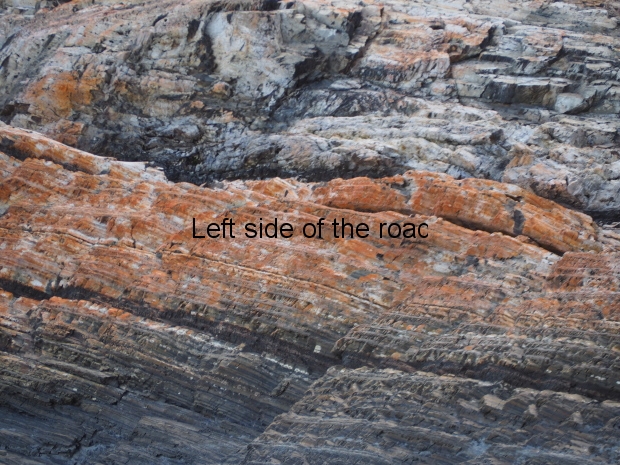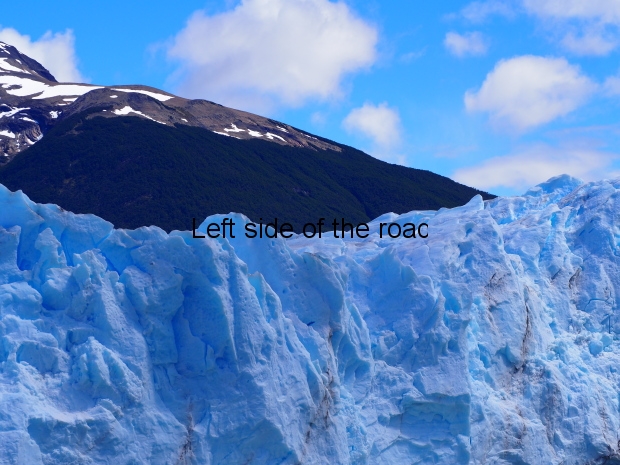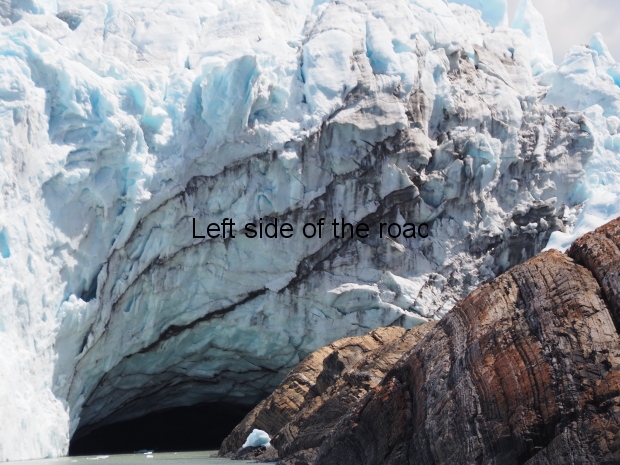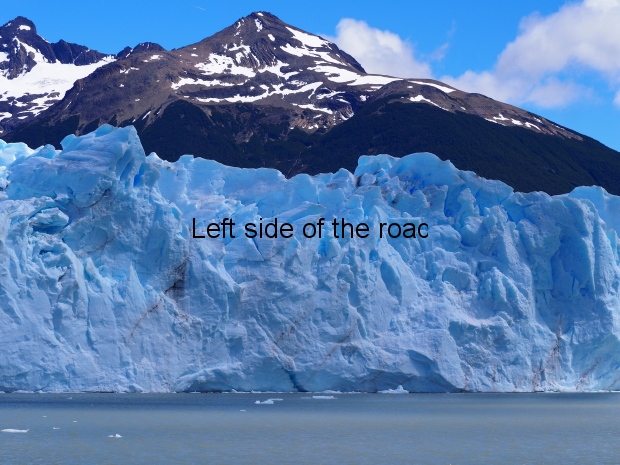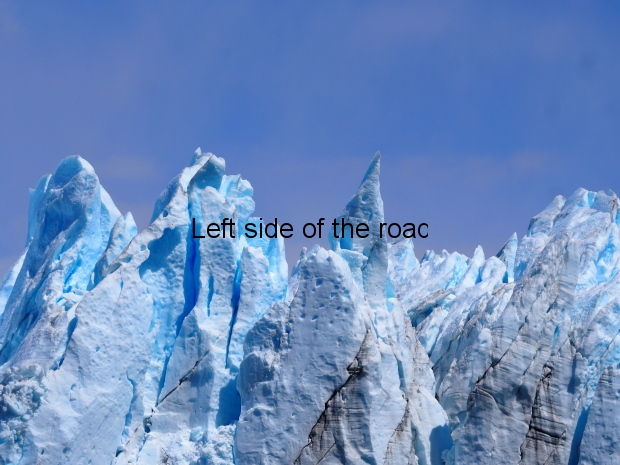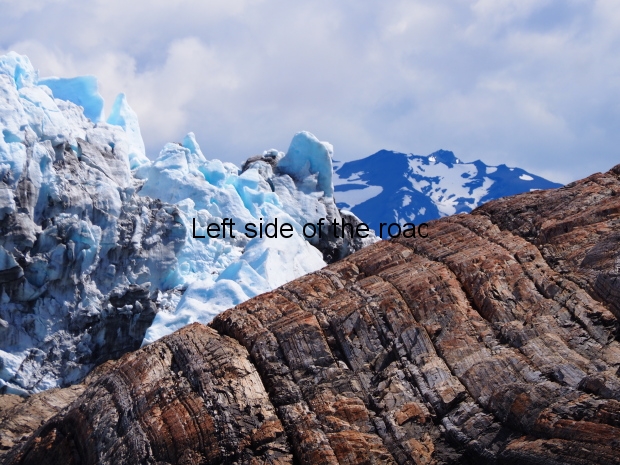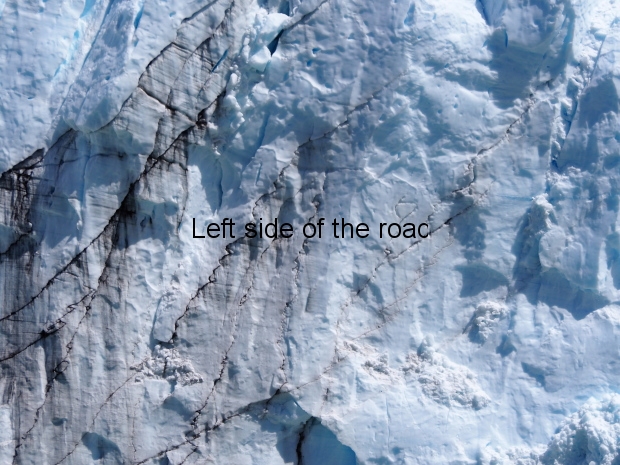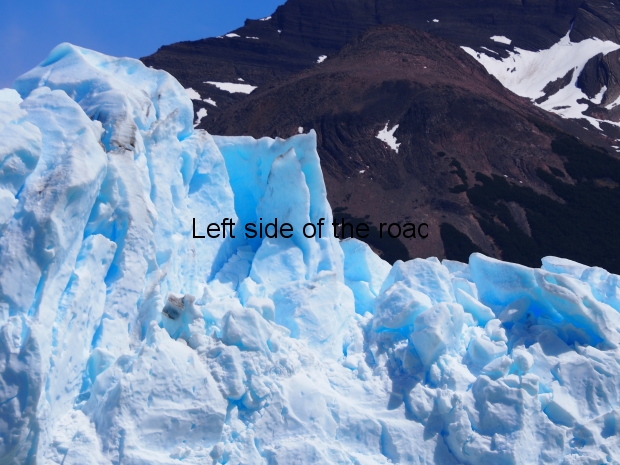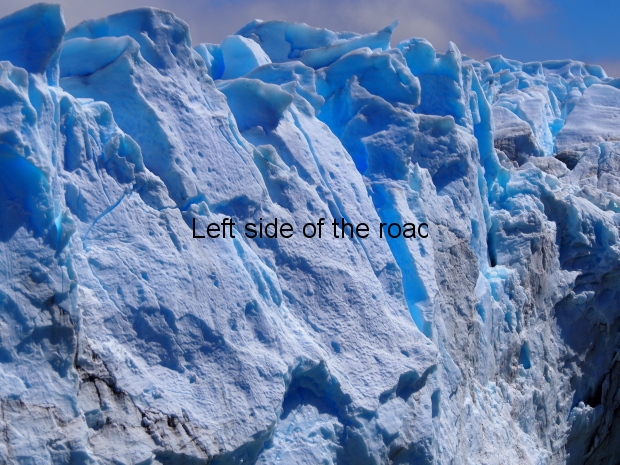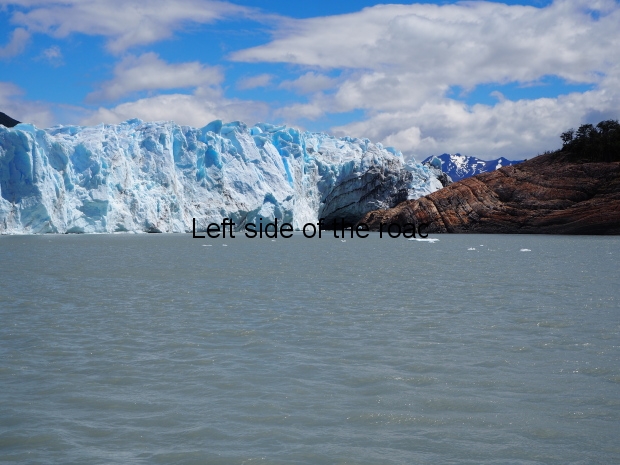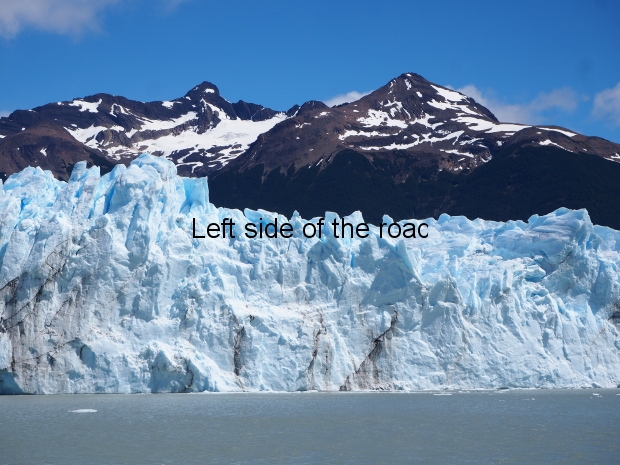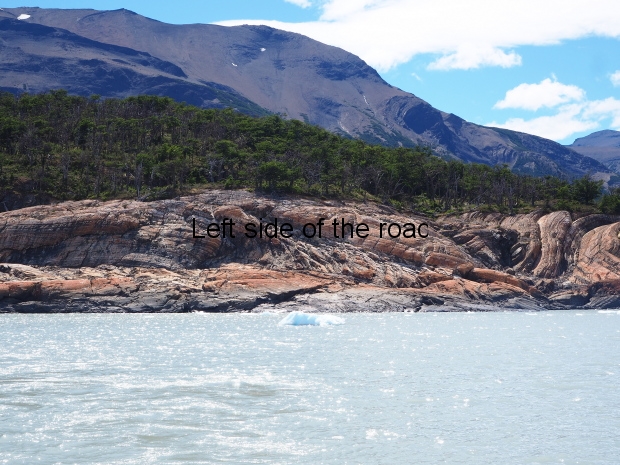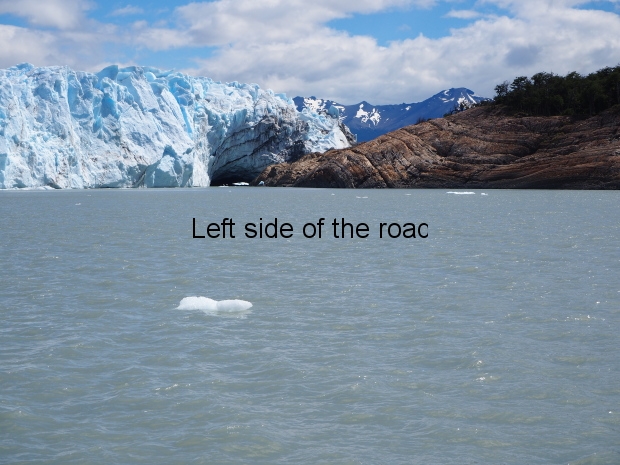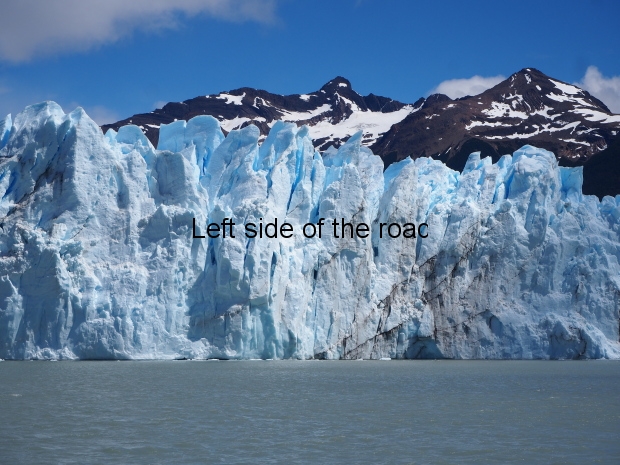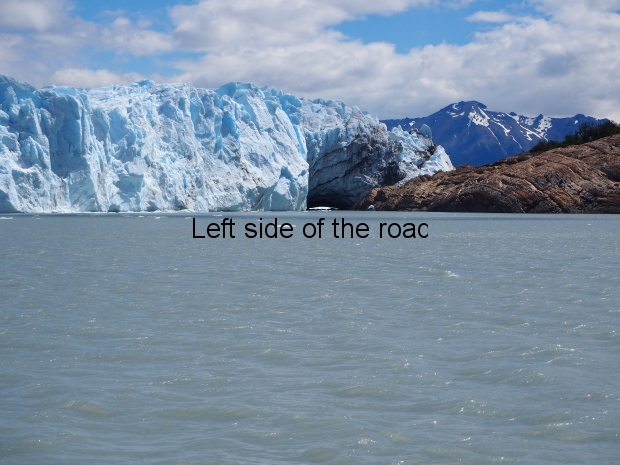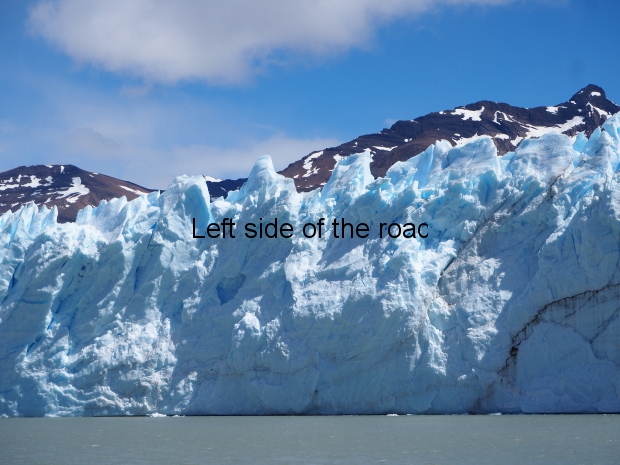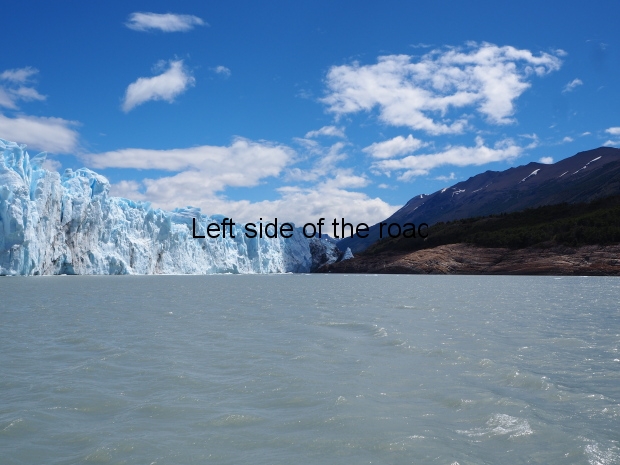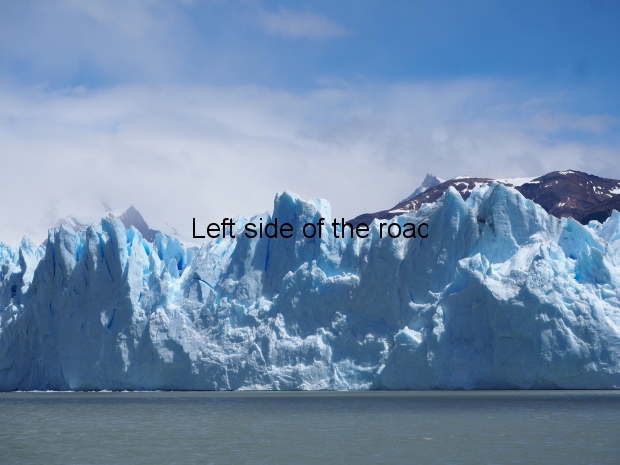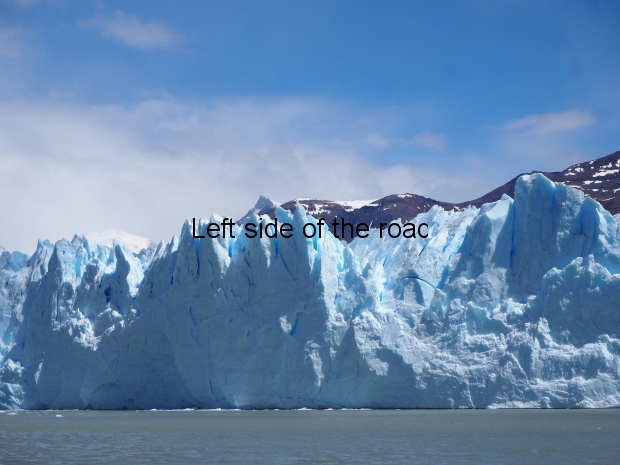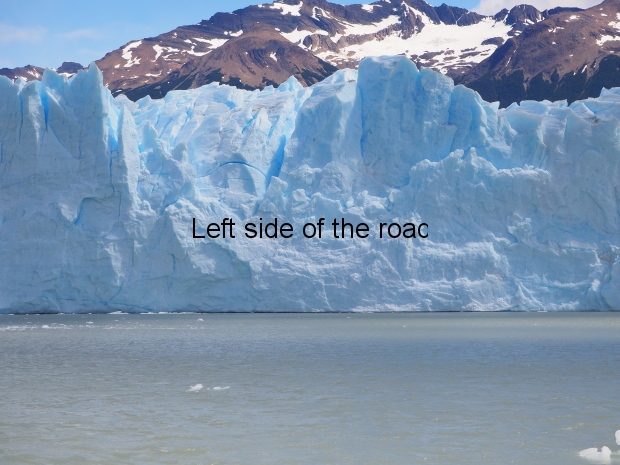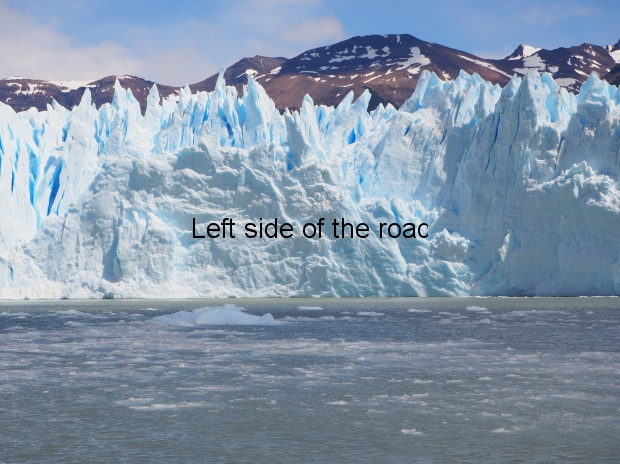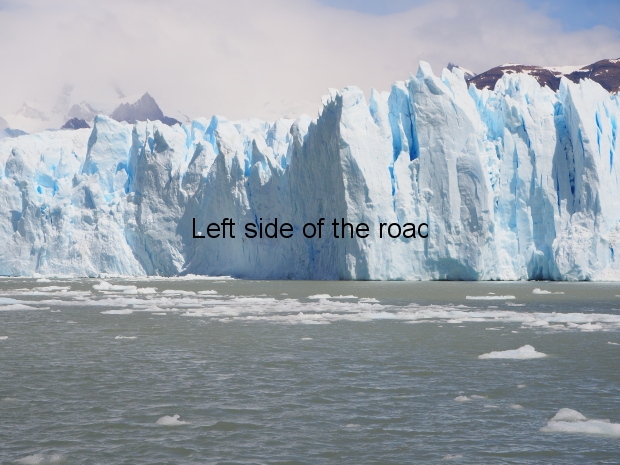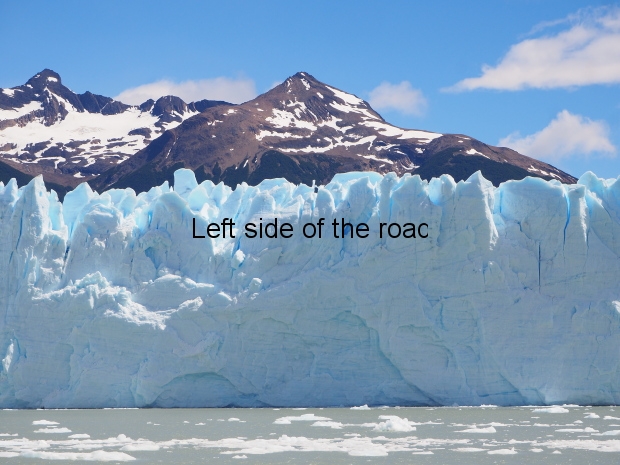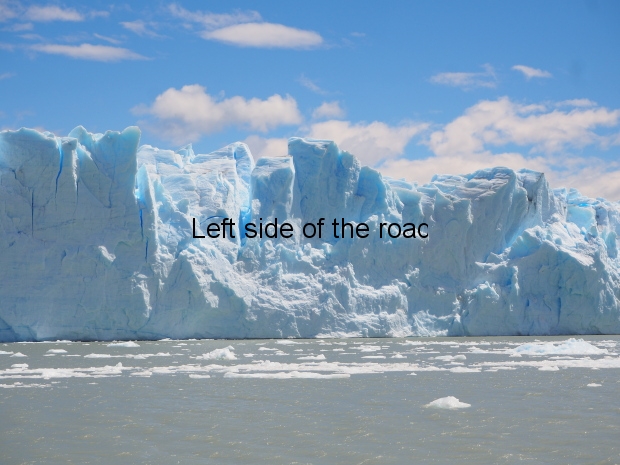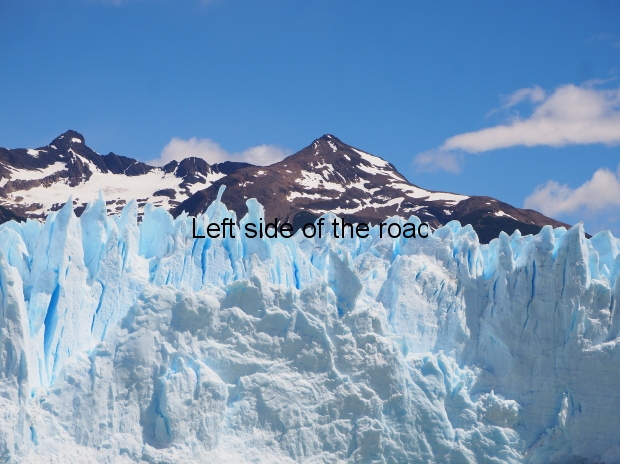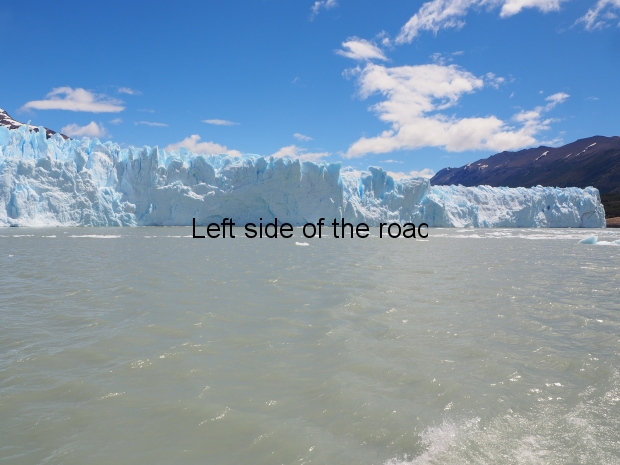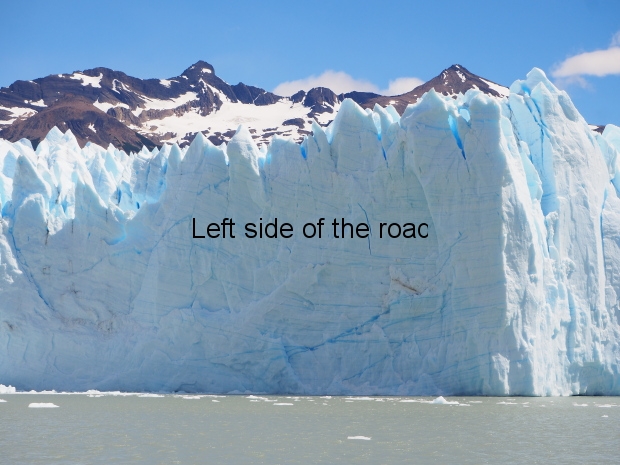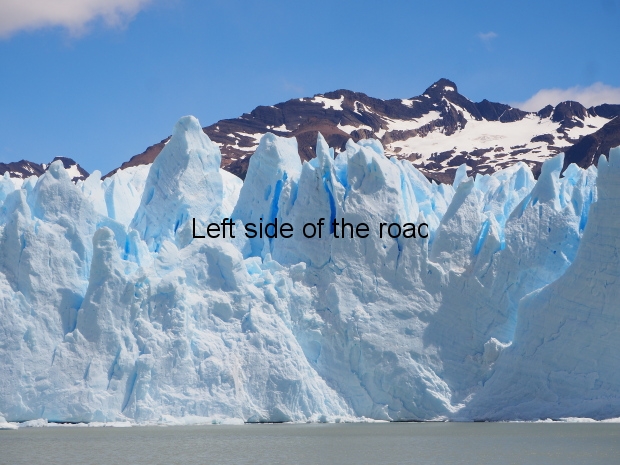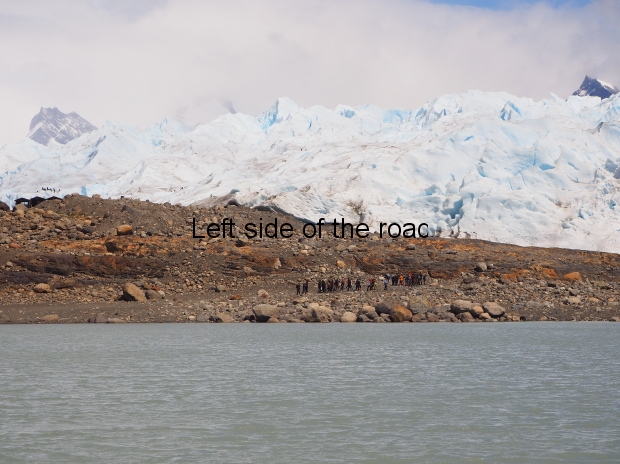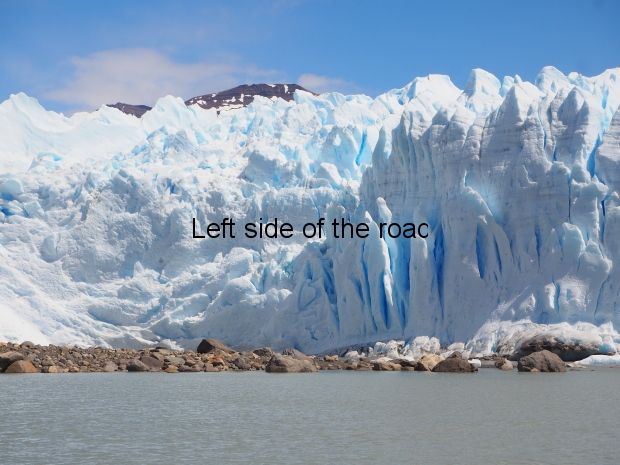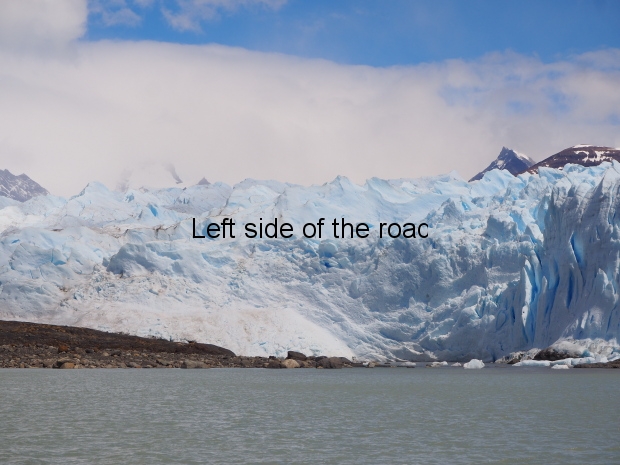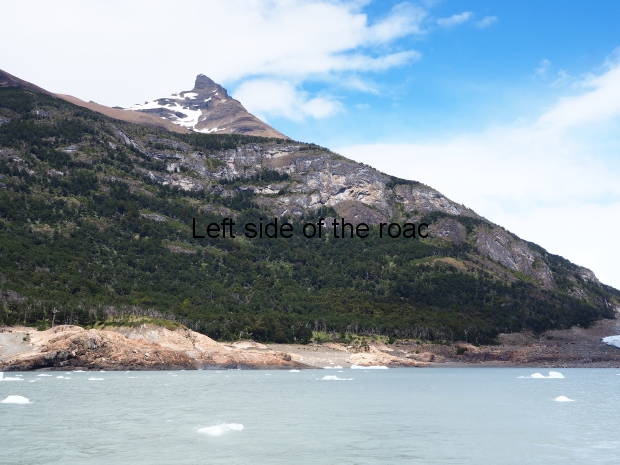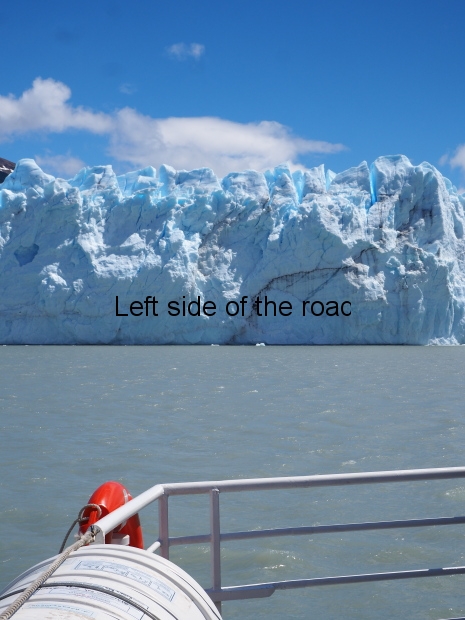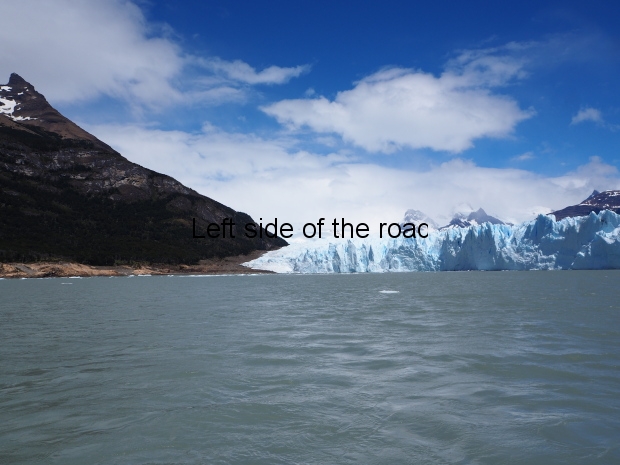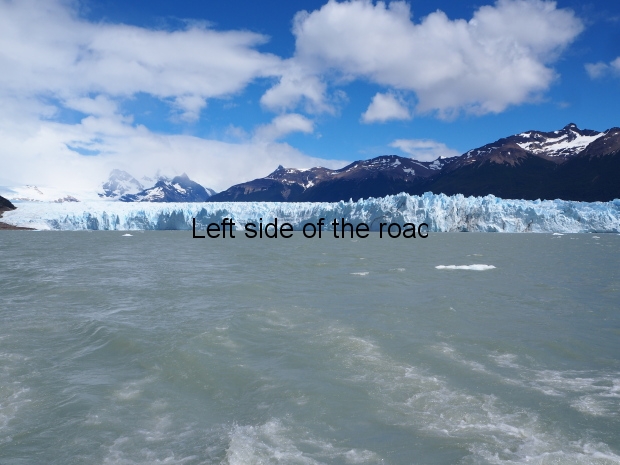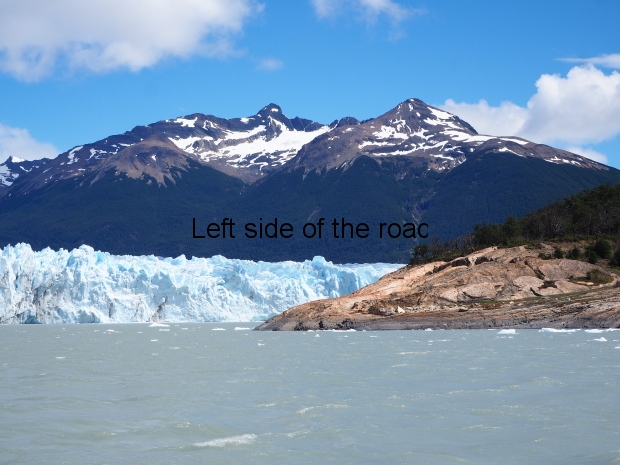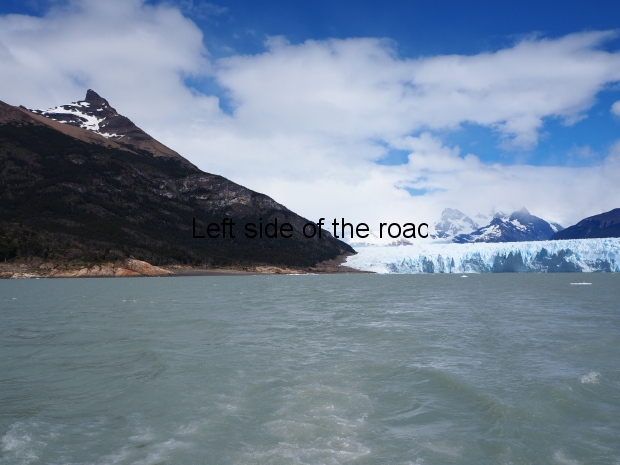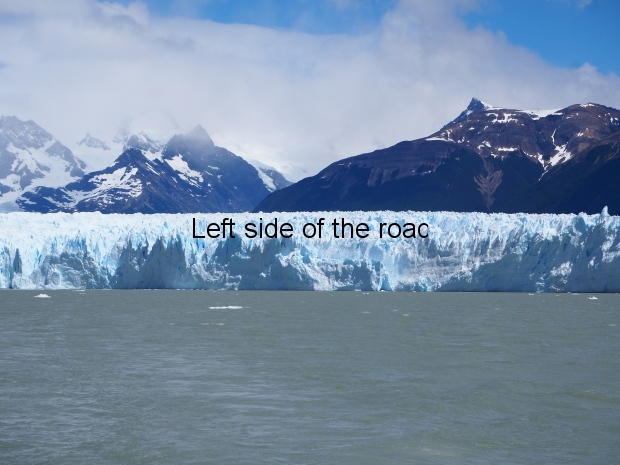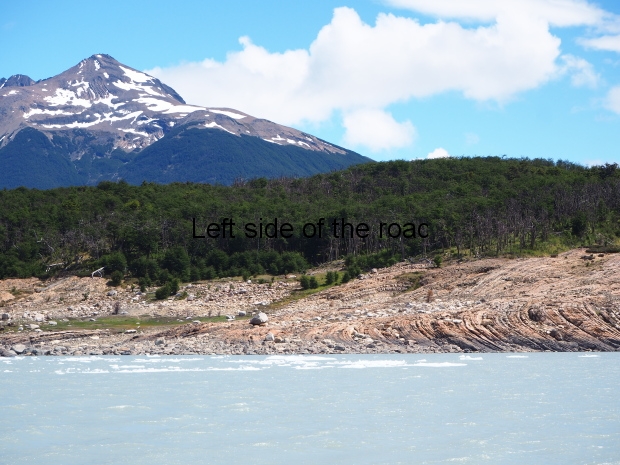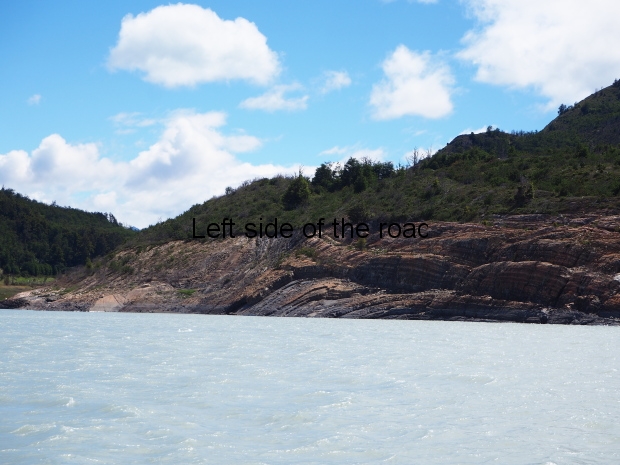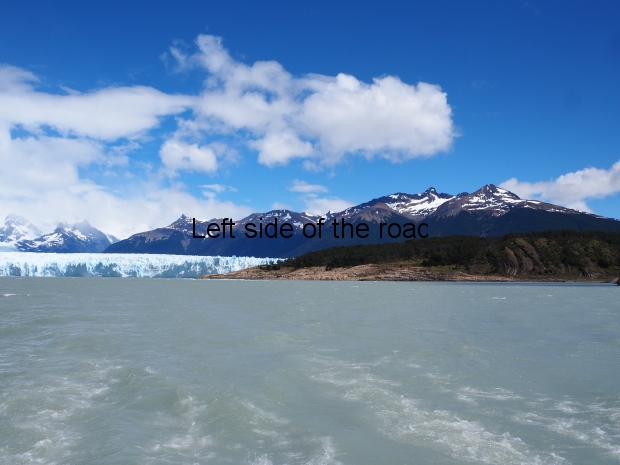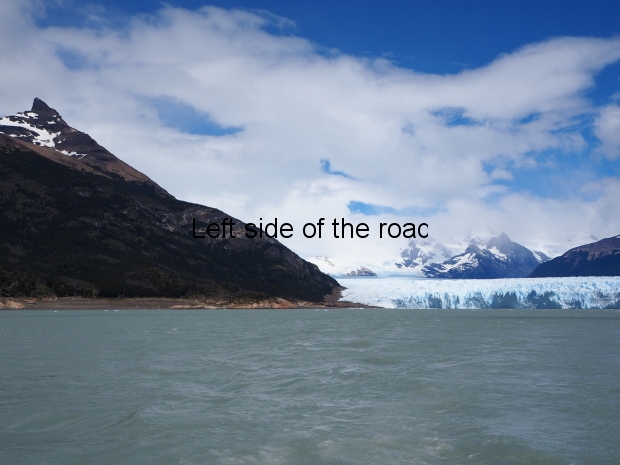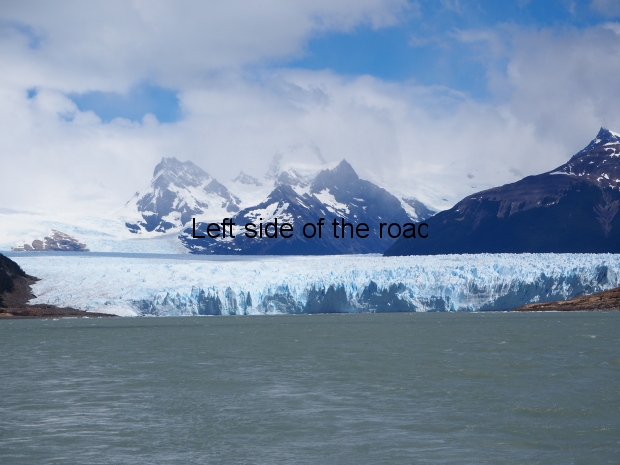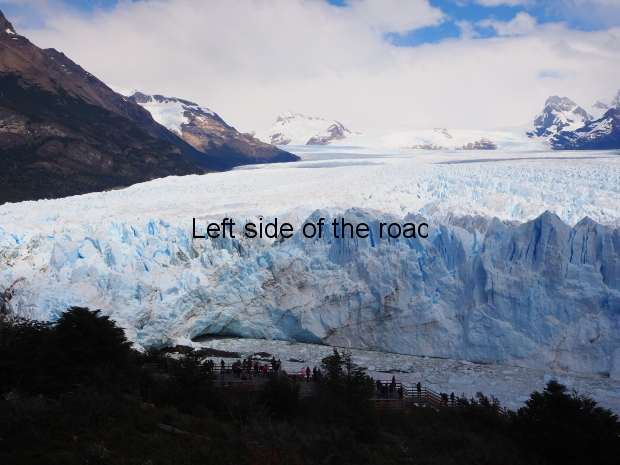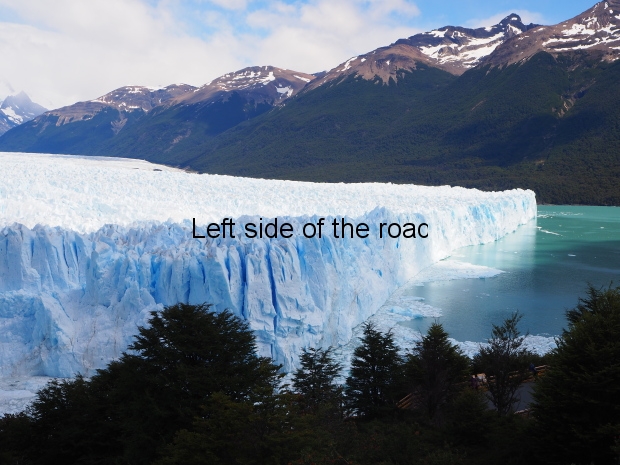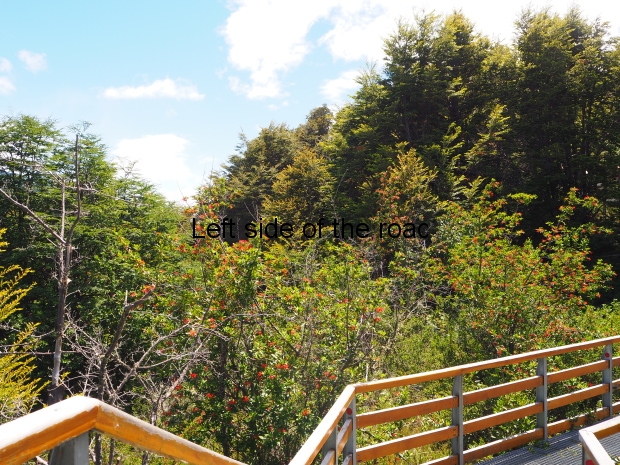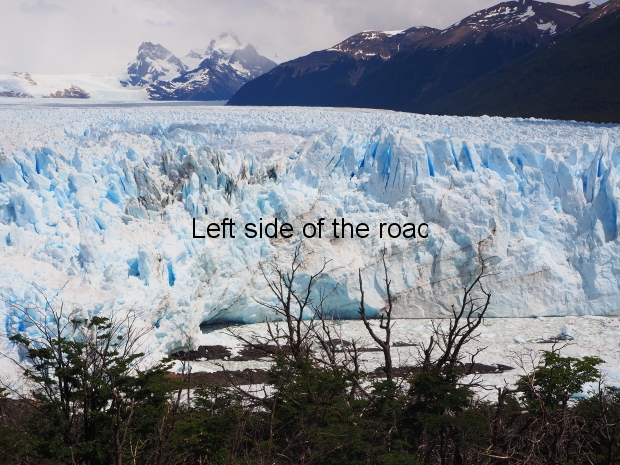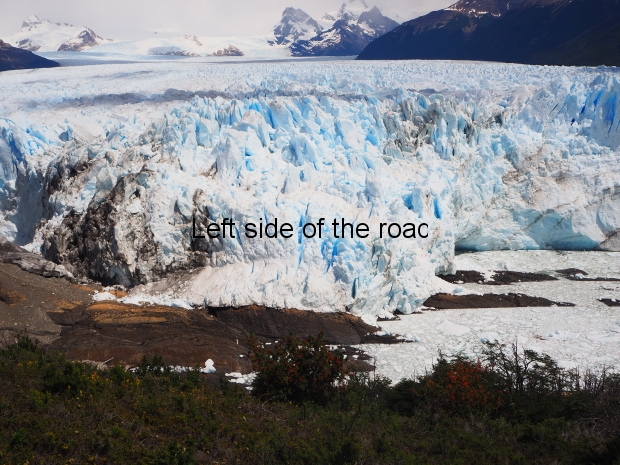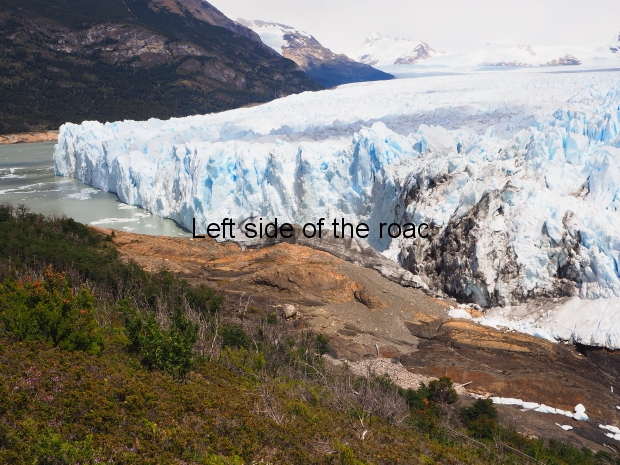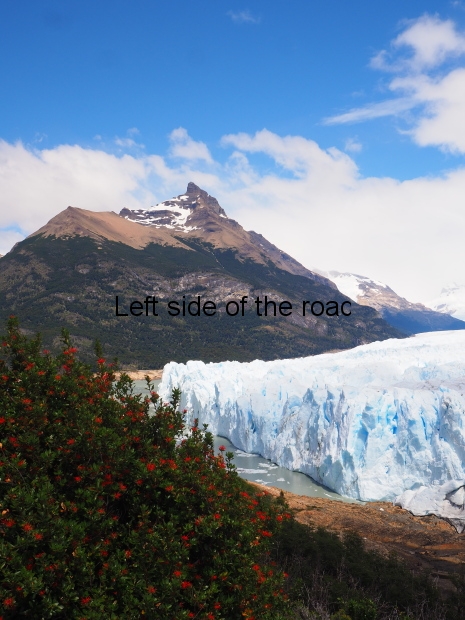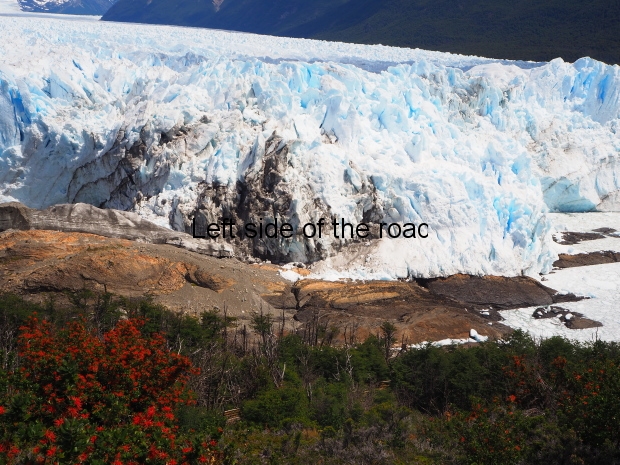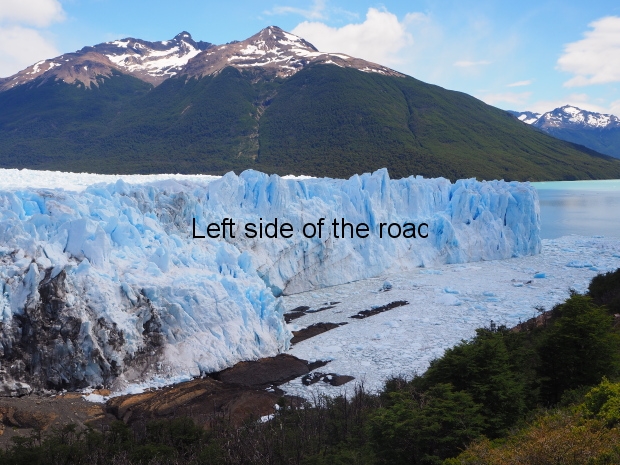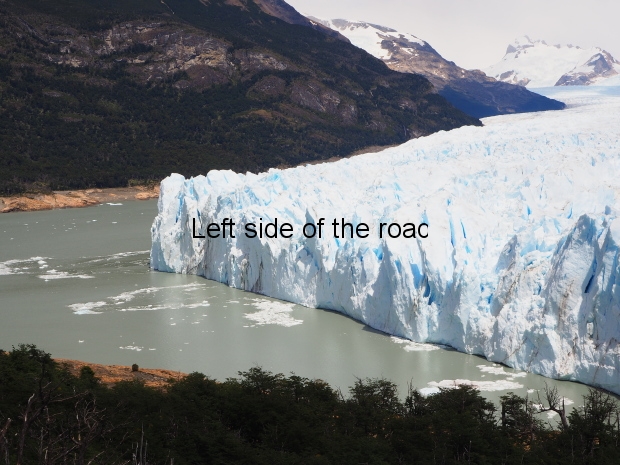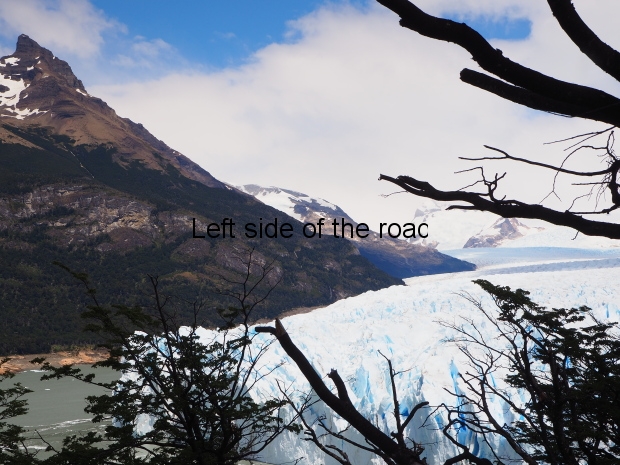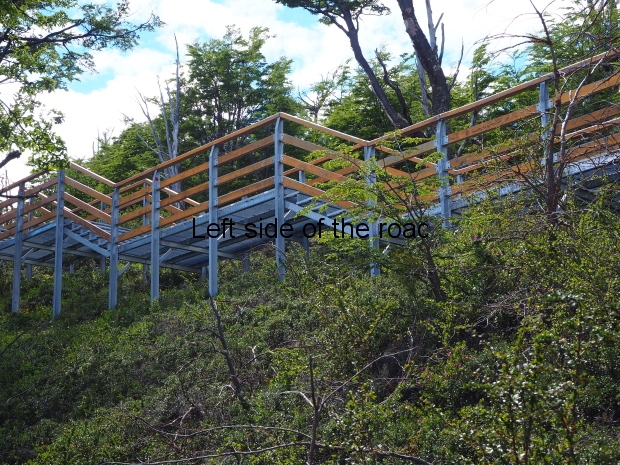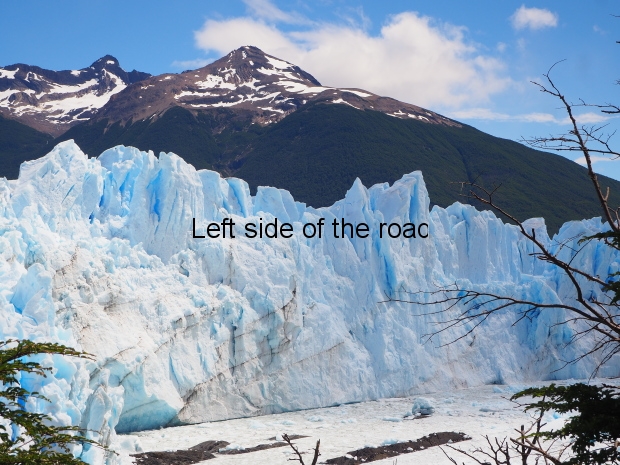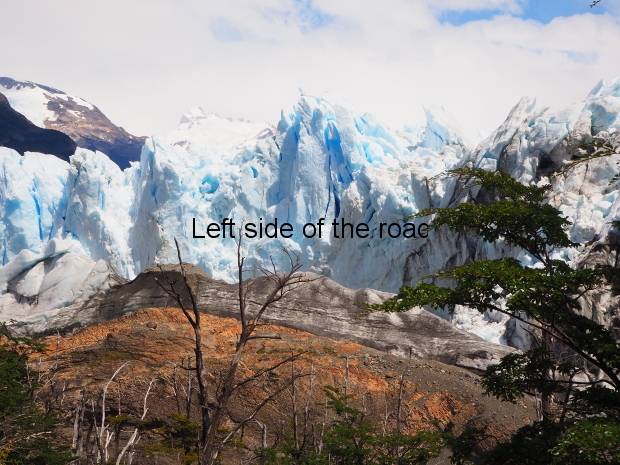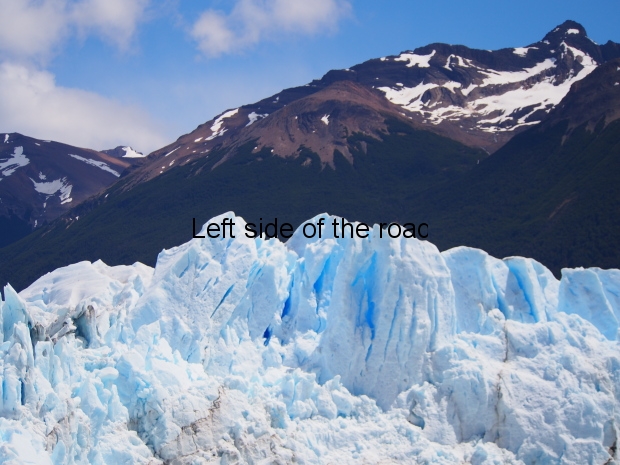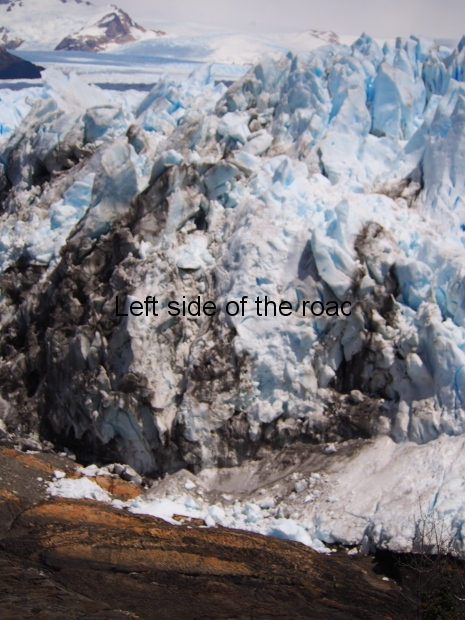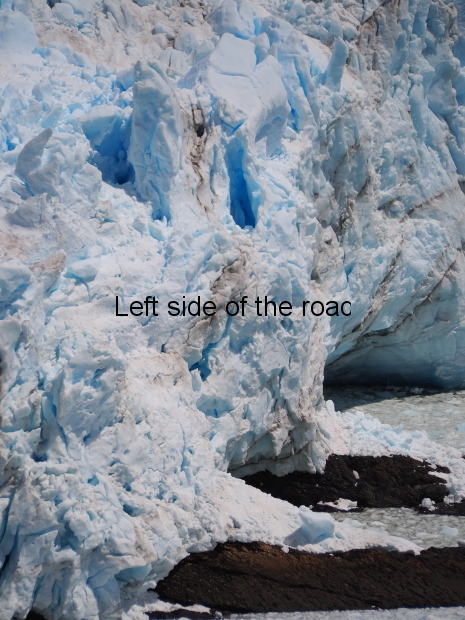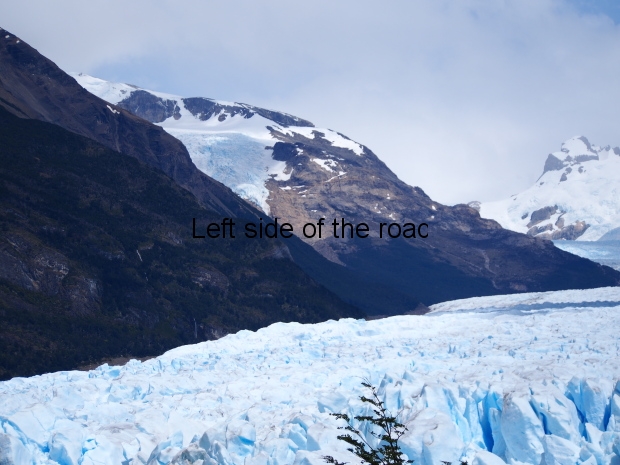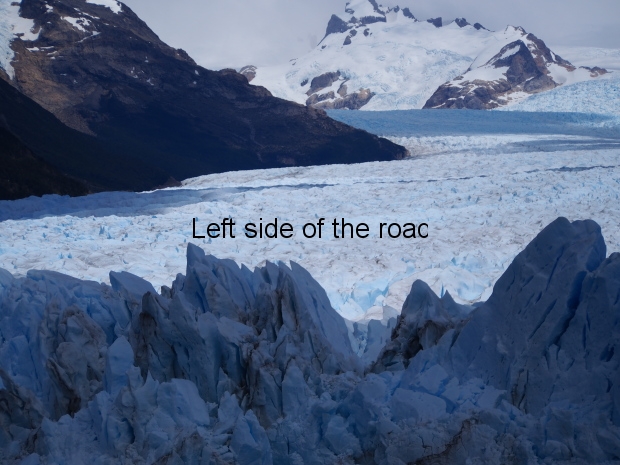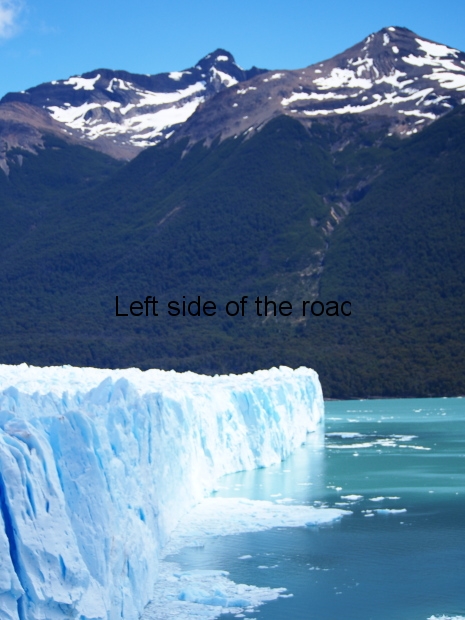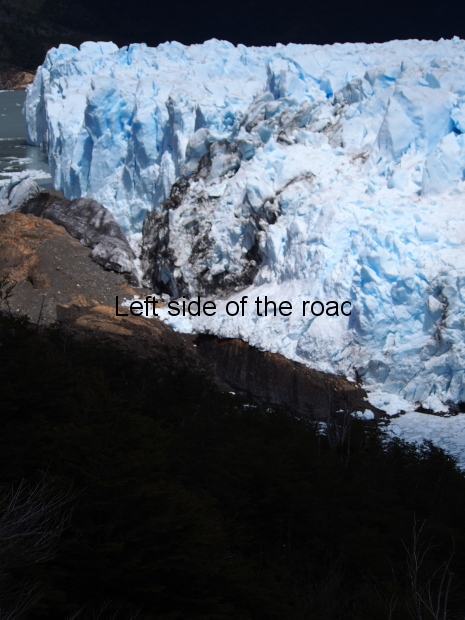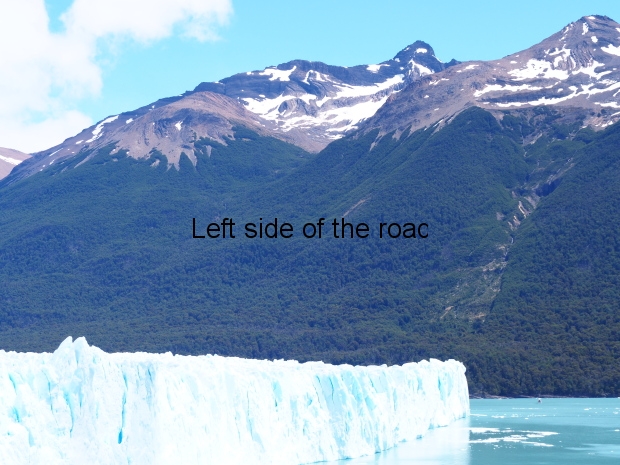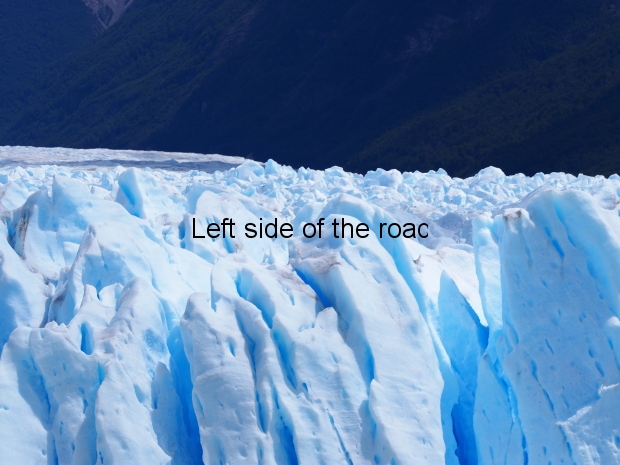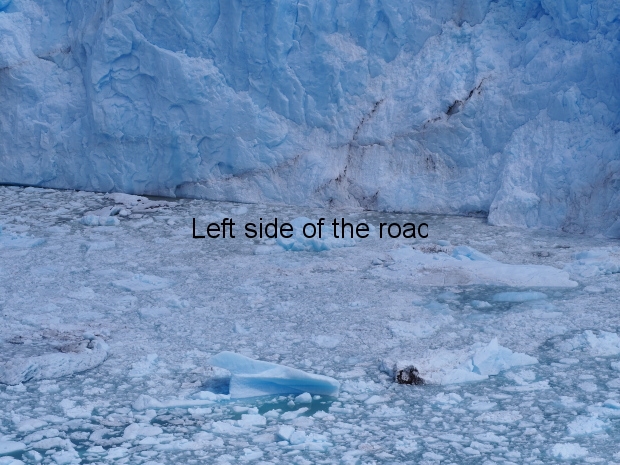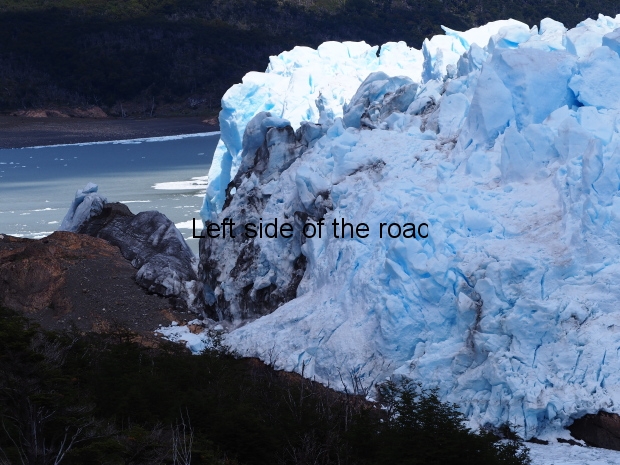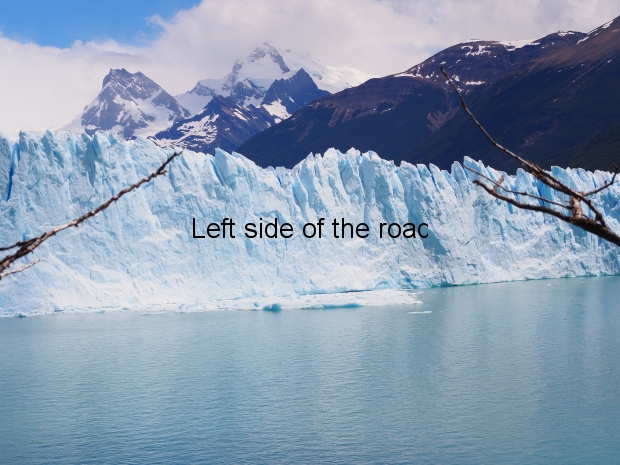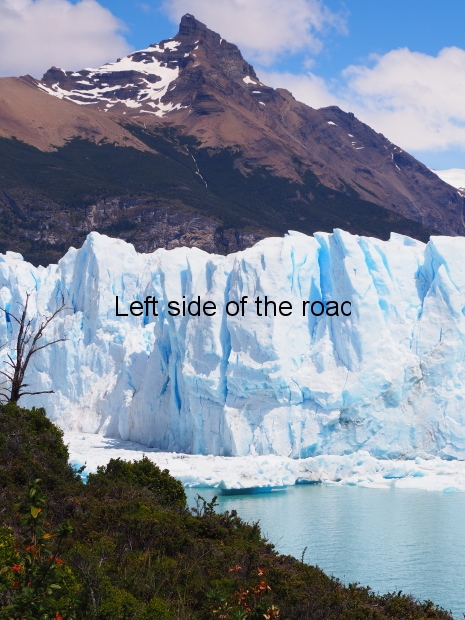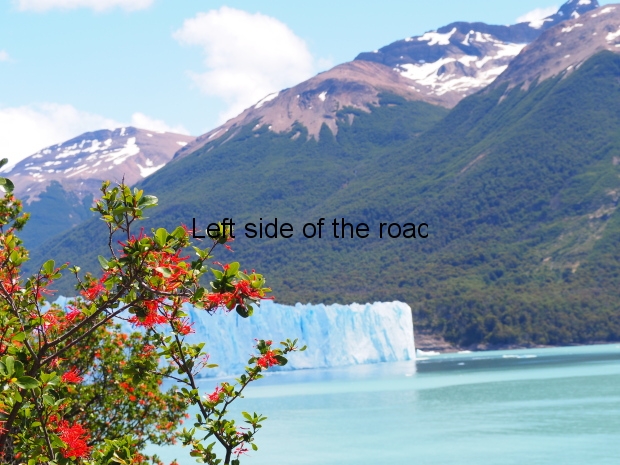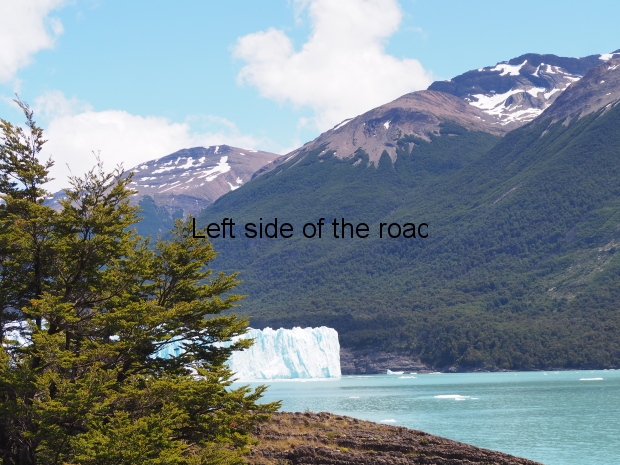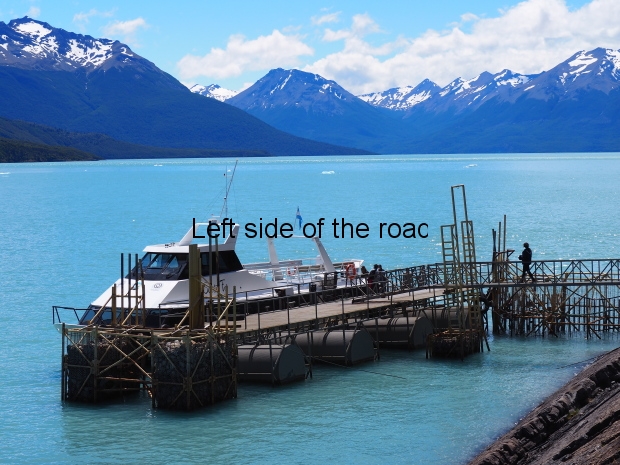
The Perito Moreno Glacier
A visit to the Perito Moreno Glacier is one of things that attract people to the town of El Calafate – the town itself is dominated by tourism and doesn’t have a lot to offer in its own right. It is possible to get to the glacier by public bus (and that would work out very cheap although involving a lot more walking to see as much of the glacier as possible) but again, for an easy life I opted for one of the tours.
As in Puerto Madryn (for Peninsula Valdés) and Puerto Natales (for the Torre de Paine) there are many agencies offering tours. They might all offer something slightly different but by the time you have paid for all that you have to pay for the costs work out very much of a muchness. These tours aren’t cheap (if the Argentinian economy is in a bit of a free fall the tourist industry has protected itself by basing their quotes on the US$) so though the situation is getting dire for many Argentinian workers the companies that run these sort of tours for visitors (from Argentina or abroad)have not really been effected.
The Perito Moreno is visited by hundreds every day for a number of reasons. It’s one of the few glaciers that can be reached relatively easily. It’s still a long day but the roads have been improved as the State realised this site could bring in a lot of money. The area is a National Park and the road infrastructure to and within the park is good enough to not put people off the long journey. There has also been a huge investment is a series of walkways on the hill facing the glacier that give anyone prepared to walk a view of virtually all the face as it reaches the lake.
The glacier is also unusual in that although most of the face of it comes to an end in water there’s a part that hits the land. It is here an unusual event happens from time to time. There’s no regularity overtime and the last was earlier this year but the next could happen within weeks.
For most of the time there’s a channel under the end of the glacier where it touches land. However, for a mixture of conditions which I’m not sure anyone really understands what happens is that this channel will get blocked. This leads to a build up of the water in a narrow branch of the Lago Argentino whose level starts to increase. This can be clearly seen on the shore line where the maximum water level is marked by the lack of any vegetation.
But this huge build up in the weight of the water together with water’s desire to find a way through any obstacle means that this blockage gets weakened. This then collapses catastrophically and is called the ‘Rupture’.
By all accounts when news got to El Calafate that this was likely to happen earlier this year virtually the whole town tried to get a front seat. There’s a series of pictures taken when this happened in 2003 on a poster in my hostel so I’ll see if I can photograph the sequence and post it here.
But the day I went wasn’t so dramatic. However, it was a perfectly beautiful, sunny day which meant you were able to appreciate the beauty of the way the various shades of blue were developed with sunlight refracting through the different thicknesses of ice. This colour show can only really be appreciated by taking one of the boat trips (most cover the southern part of the glacier although there is also a smaller boat on the northern side). The improving weather in the high mountains by mid afternoon meant that a clear view of those peaks was also possible.
Practical Information
I took the tour organised by the owners of the hostel I stayed in called ‘The Alternative Glacier Tour’. It took a different route out of town,providing a panoramic view of the Lago Argentino beside El Calafate itself and also took a route through the countryside, along dirt roads rather than going the quickest and most comfortable route.
Basic cost = A$1,110 (about £20.00)
Then on top of this was the boat trip = A$800 (about £16.00). This I would recommend,especially if it’s a bright and sunny day. On a dull and overcast day you would still get the sense of the size of the glacier but would miss out on the colours.
On top of this there is the entrance to the National Park itself = A$700 (about £14.00).
What follows is a lot, and I mean a lot, of pictures of ice.

